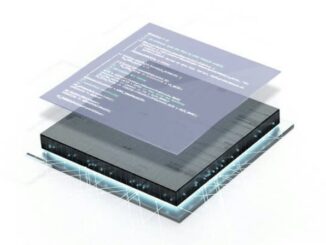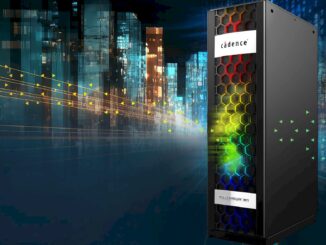
There has been a lot of talk about taking HPC technologies mainstream, taking them out of realm of research, education and government institutions and making them available to enterprises that are being challenged by the need to manage and process the huge amounts of data being generated through the use of such compute- and storage-intensive workloads such as analytics, artificial intelligence and machine learning.
At The Next Platform, we have written about the efforts by systems OEMs likes IBM, Dell EMC, and Hewlett Packard Enterprise and software makers like Microsoft and SAP to develop offerings that are cost-efficient and easy to use while still addressing the increasing computing needs facing enterprises.
At the recent SC17 supercomputing conference, Dell EMC rolled out bundled hardware and software packages based on its new PowerEdge C4140 servers that are optimized for AI, deep learning and machine learning. At the same time, HPE unveiled introduced new Apollo servers – including the Apollo 70, its first HPC system running on a chip based on the Arm architecture – and storage systems that are designed to make it easier for mainstream businesses to run AI and HPC applications.
That theme could also be seen at other parts of the SC conference. The creators of a project called Aeromines outlined their efforts to reduce many of the challenges facing business who want to run computational fluid dynamics (CFD) simulations by putting the work into the cloud. A broad array of industries – including aerospace, power generation, automotive, manufacturing, oil and gas, and construction – rely on highly complex CFD applications in their work, and building out an on-premises HPC environment to run the workloads can be costly and time-consuming. Romain Klein, Aeromines’ co-founder, software engineer, and cloud architect, said during a session that the feedback the project has received from companies in various industries that they want to find a viable option.
“They want fast access to research and cost-efficient software,” Klein said. “They don’t want to wait five years to get the new improvement in the software. They want to avoid expensive HPC resources on-site. They want to move into the cloud, into a pay-as-you-go solution.”
According to the Aeromines, the idea for a scientific cloud platform for CFD work came to Elie Hachem in 2011, and Klein joined on that same year. Hachem is head of the Computing and Fluids Research Group at CEMEF, a laboratory of Mines Paristech. A proof-of-concept came a year later, and Aeromines was born in 2014. The company has built its offering on the IBM Cloud platform, the result of a partnership that was struck in 2014.
Hachem and Klein said using the Aeromines cloud and the HPC applications that are being put on it can reduce the amount of time to run CFD simulations by as much as 91 percent. The idea is that companies can take an application, punch in the parameters of their simulation, and let it run. In addition, with real-time visualization they can check on the simulations as they run to ensure they are getting the results they need, rather than having to wait until the simulation is completed.
“A typical wind turbine scenario would be, what are the dimensions of your domain?” Hachem said. “How many wind turbines do you want to put in? For each wind turbine, what is the X-Y? Where do you want to put it? These are the parameters for your application. So you have an app called ‘Wind Turbines’ and inside you put your parameters. You set them up, one by one, you set up the wind velocities and you’re up.”
The Aeromines platform includes an adaptive parallel anisotropic mesh process and multiple monolithic solvers for such jobs as determining average flows in a structure such as pipes or turbines, flows around a structure such as aircraft, and turbulent flows. Aeromines also can work with customers to create custom applications that the company will test offline, then make available to run from anywhere. The platform-as-a-service (PaaS) solution includes enterprise-grade scheduling, the ability to scale up or down as needed, and isolated resources to a shared or dedicated cluster for highly confidential data.
During the session, Hachem and Klein pointed to several projects that have run on the Aeromines cloud, including one for Thales Alenia Space for developing a satellite stratospheric airship – a blimp – a civil defense drone for Tyrix Aerospace and wind turbines.
The two Aeromines executives said they wanted to democratize HPC and make it available to companies in industries the rely on CFD simulations. Through the cloud, the customers will be able to get the work done while avoiding the expense and time that comes with setting up an HPC environment on-premises and using off-the-shelf software that is updated every few years.
“During the project, the industry can access what you’re doing in the cloud,” Hachem said. “This is very important. The software will evolve and change during the project. The industry will try what you are doing, will test it promptly, not wait three or five years until a new version of the software comes out. It’s a new concept. We are building apps in the cloud dedicated to each project or industry problem.”





Be the first to comment